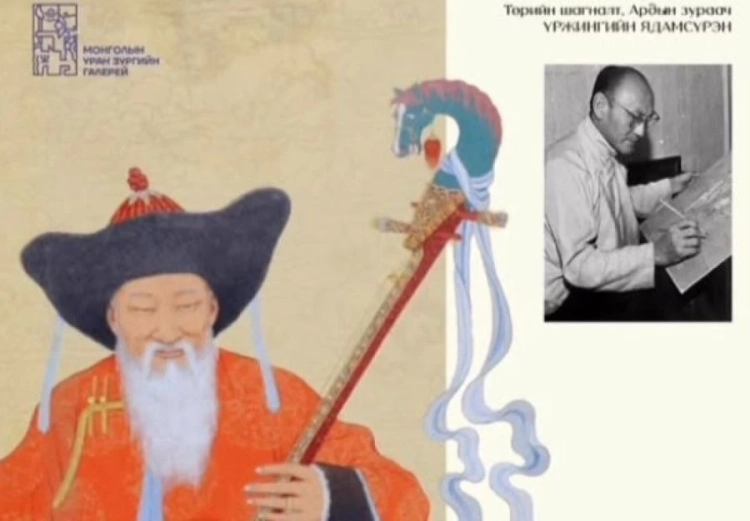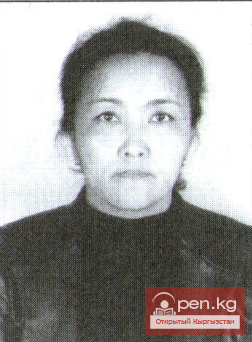
Chuykov Semyon Afanasyevich (1902 -1980) Painter. People's Artist of the USSR. Full member of...

Art Gallery in Kyrgyzstan The Gapar Aitiev National Museum of Fine Arts is the main artistic...

Moldokhmatova Aina Asanbekovna Art historian. Born on March 31, 1953, in the city of Frunze,...

PROTOCOL OF THE SECOND ORGANIZATIONAL MEETING OF THE ACTIVE ARTISTS OF FRUNZE UNDER CULTPROP OF...

Akmatova Kulnar Rymbekovna Designer. Born on July 12, 1960, in the village of Chyrpykty, Issyk-Kul...

Obraztsov Vladimir Vitalievich (1891 — 1934) Painter. Organizer of the first art circles in the...

Before the revolution, the Kyrgyz people knew visual arts only in its folk, applied form. The art...

Toktosunova Gulchakhra Iskenderovna Art historian. Honored Worker of Culture of the Kyrgyz...

Kurbanov Talasbek Keldibaevich Sculptor. Born on March 13, 1963, in the village of Chiyirchik,...

Kadyrbaeva Tamara Tursunbaevna Art historian. Born on March 16, 1951, in the village of Yapalak,...

Kailbuldayeva Saltanat Asanovna Graphic artist. Born on March 7, 1959, in the village of...

Nikitенко Valery Vladimirovich Painter. Born on January 6, 1974, in the city of Frunze. Graduated...

Akylbekov Sabyrbek Mambetsadykovich Painter. Honored Artist of the Kyrgyz SSR. Born on February...

Chalanov Ishembek Applied artist. Honored Worker of Culture of the Kyrgyz Republic. Excellent...

Tashiev Jumagul Applied artist. Born on January 10, 1956, in the At-Bashinsky district. In 1981,...

The Union of Artists of Karakol, in collaboration with the Kyrgyz National Museum of Fine Arts...

The agency "Event DeLuxe" once again invites future brides and grooms to the exhibition...

Idrisova Cholpon Musakeevna Art historian. Born on November 19, 1960, in the Kant district of Chuy...

Ignatiev Alexander Illarionovich Painter. People's Artist of the Kyrgyz SSR, laureate of the...

Asanov Sagyn Asanovich Painter. Born on July 20, 1930, in the village of Kegety, Chui District,...

Since November 9, an exhibition dedicated to the memory of K. N. Usubaliev (1920-2000), director...

Dudarev Vasily Ivanovich Artist - applied artist. Graphic artist. Born on July 5, 1942, in the...

Ormokeev Bakyt Kozuevich Sculptor. Born on March 26, 1961, in the city of Frunze. In 1980, he...

The exhibition "Amar Bayasgalan" will feature rare works of art from the collection of...

On June 1 at 11:00 AM at the café "Letto", Toktogula/Sverdlova Exhibition-sale of...

Bostonkulova Tamara Orozalieva Biography. Born on December 25, 1966, in the city of Jalal-Abad. In...

Bukharmetov Rifkat Ismailovich Painter. Honored Worker of Culture of the Kyrgyz Republic. Born on...

Alyi Bekboeva (1886-1977) Alyi Bekboeva was the first Kyrgyz folk artisan, admitted to the Union...

Ryskeldieva Zulaykha Kochorbaevna Artist-craftsman. Born on January 8, 1958, in the town of...

Recently, in the loft "Tsех," six artists working in different genres of contemporary...

Sartbaev Bolot Karataevich Designer. Born on May 28, 1955, in the city of Jalal-Abad. In 1976, he...

From October 16 to November 4, at the G. Aitiev National Museum of Fine Arts, there will be a...

Kadraliev Zhoomart Asanalievich Monumentalist, painter. People's Artist of the Kyrgyz...

State Historical Museum...

Kunakunov Maris Salidinovich Painter. Born on August 24, 1953, in the village of Chayek, Naryn...

Kyrgyz National Academic Theater of Opera and Ballet named after Abdylas Maldybaev The Kyrgyz...

Uraimov Suyunbay Mamaevich Sculptor. Born in 1958 in the village of Kurshab, Uzgen District, Osh...

On April 7, the Museum of Modern Art in Manhattan, New York, will screen the film...

Bolzhurov Erkin Otorbekovich Photographer. Born on January 6, 1958, in the village of Kyzyl-Suu,...

Yefremenko Nikolai Fyodorovich Graphic artist. Painter. One of the representatives of the older...

Beishenov Asanaly Painter. People's Artist of the Kyrgyz Republic. Born on April 24, 1941, in...

Artykbai Jeenbay Mamatjunusovich Applied artist. Honored Educator of the Kyrgyz Republic. Born on...

Bazharbaev Jumabek Painter, graphic artist. Born on June 28, 1962, in the city of Tokmok. In 1982,...

Osmonov Abdray Painter. People's Artist of the Kyrgyz Republic. Born on December 27, 1939, in...

To regulate emissions of harmful substances into the atmosphere, individual norms are used for...